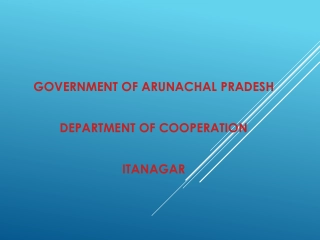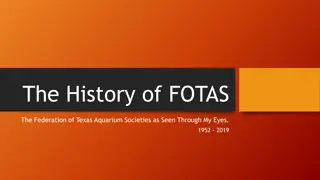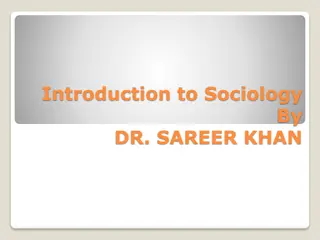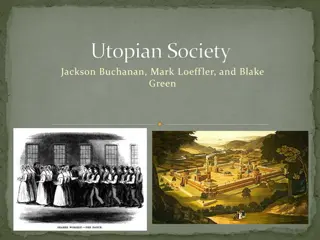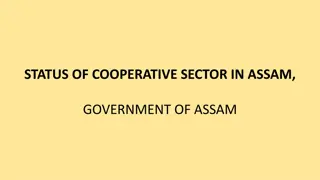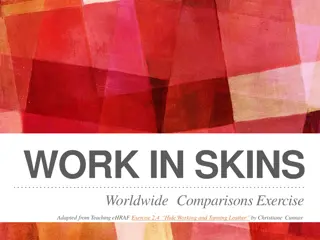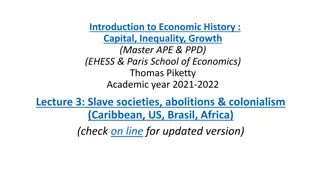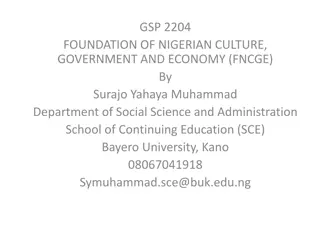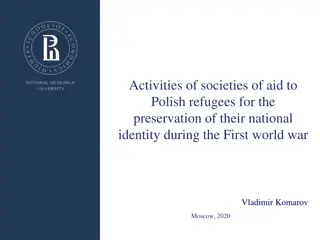Understanding the Kanda System in Matrilineal Societies
The Kanda system was a key aspect of matrilineal descent groups that controlled land and kinship relations in C16 societies. Kandas had flexible structures, varying from hierarchical to egalitarian, with chiefs playing different roles. Key features included defined names, traditions, and autonomy in managing land affairs. Free individuals relied on four chiefs for support, while slaves lacked a kanda and had limited support. The system influenced residence choices and migration patterns.
Download Presentation

Please find below an Image/Link to download the presentation.
The content on the website is provided AS IS for your information and personal use only. It may not be sold, licensed, or shared on other websites without obtaining consent from the author. Download presentation by click this link. If you encounter any issues during the download, it is possible that the publisher has removed the file from their server.
E N D
Presentation Transcript
Kinship relations were dominated by the ideology of the kanda Kanda were matrilineal descent groups which controlled and legitimised the holding of land C16 there were some larger kanda which could be used for political purposes but most were in smaller autonomous groups
Kanda structures were flexible So when power was concentrated, the kanda could become very hierarchical, with chiefs at each level exercising considerable power over juniors At other times, there could be a more egalitarian structure where chiefs acted as representatives of committees which had the real power TASK: Use your Play Doh to make two different representations of kanda structures
Key features of the kanda:- Defined names, traditions and memberships Exclusive set of common affairs centred on exploiting their land Had the necessary autonomy and procedures to deal with these affairs The passing on of land depended on your relationship with the kanda
A free man could normally depend upon 4 chiefs to be interested in his affairs:- Lineage head of his mother s segment (his own kanda) Lineage head of his father s kanda Lineage head of his paternal grandfather s kanda Lineage head of his maternal grandfather s kanda TASK Use your Playdoh to illustrate this and explain to your partner
A person could normally choose between several places of residence:- Lands of his own lineage (i.e. his mother s kanda) Those of his father s Those of either of his grandfather s Question: What impact would this have on migration and therefore the growth of the kingdom?
A slave was a person without a kanda or kanda chief who could defend his interests He settled on his owner s land and was classified as a child and so had only one chief interested in his affairs i.e. his father (owner) as opposed to the usual four But this did not mean he was very inferior as social progress depended on the power of the group to which he was affiliated and on their willingness to support him
Slaves could become free if a lineage wanted to expand and co-opted them as a new lineage A slave ( child ) could marry into his owner s ( father ) kanda and then get the privileges and responsibilities of its other children TASK: Use your Play Doh to show the position of a slave within the kanda system and how this could change
Slaves were only acquired occasionally through pawnship, exchange, sale or war and were assimilated quite quickly into kanda structures C16 the only people who could be legitimately sold were newly acquired captives
Marriage fostered alliances between neighbouring groups C17 there was a preference for matri- or patrilineal cross- cousin marriages as they would reinforce an existing relationship between groups TASK: Use your Play Doh to show how this would work
Men Clear forest/scrub Produce tree crops Work with wood and iron Hunting Long-distance trading Women Work the land Cook evening meal Harvest sea products (if on the coast) This division of labour did not apply to slaves The kanda was normally headed by a female and a male chief
During the early C15 the central kanda of the Kikongo- speaking region south of the Zaire evolved the kingdom of Kongo as a way to exploit the different surrounding regions The members of these 12 kanda formed a ruling group with a clear identity and closed membership They had an exclusive body of common affairs, notably:- The election of the manikongo and the government Exploitation of neighbouring regions Set procedures for doing the above
The Manikongs Council 12 individuals divided into 3 groups 4 titles held by women who may nromally have been the female kanda chiefs of the manikongo sown (i.e. mother s), father s, maternal and paternal grandfather s kanda The principal woman called Mother of the manikongo was his female chief They were collectively called the Mwissikongo
A group then evolved which was directly dependent upon the manikongo and independent of the kanda This was the manikongo s household People from diverse origins could become part of this household Members could be settled on land in and around Mbanza Kongo, overriding the local kanda s claim to the land


